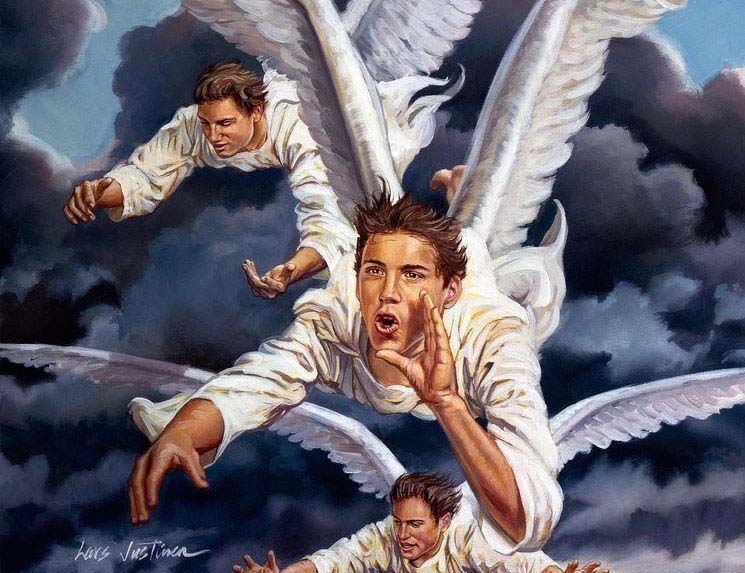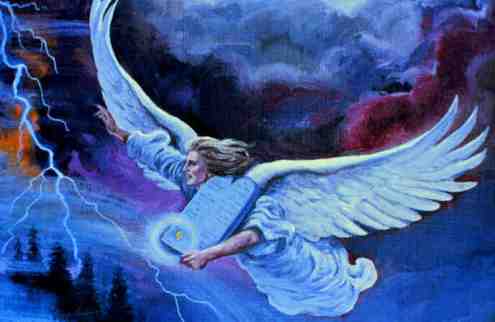
The Great Harvest of the Earth

Samuel Smith
23 Jan'19
5
LESSON 4
THE GREAT HARVEST OF THE EARTH
You are welcome to another edition of Insights from God's Word, a Bible study programme that is committed to sharing God's Word by allowing the Bible to speak for itself.Friends, I want to thank the Lord so much for how far He has brought us. This study will be the last in our series on The Three Angels' Messages. This last study is captioned: The Great Harvest of the Earth. It is interesting to learn that the three angels' messages of
"And I looked, and behold a white cloud, and upon the cloud one sat like unto the Son of man, having on his head a golden crown, and in his hand a sharp sickle" (
Key Explanation: The picture that the apostle John sees here is that of Christ. He is referred to as the Son of man, a title that is utilised for Christ in both the Old and New Testaments of Scripture (see
1:10 And while they looked stedfastly toward heaven as he went up, behold, two men stood by them in white apparel;
1:11 Which also said, Ye men of Galilee, why stand ye gazing up into heaven? this same Jesus, which is taken up from you into heaven, shall so come in like manner as ye have seen him go into heaven."
(
The apostle John also sees Christ in this verse wearing a golden crown. The Greek word rendered crown in this verse is "diadema" which is a symbol of kingly or imperial dignity and status. The fact that Christ wears this crown at His second coming illustrate the fact that He is coming the second time as "KING OF KINGS, AND LORD OF LORDS" (
Moreover John sees Jesus in
13:25 But while men slept, his enemy came and sowed tares among the wheat, and went his way.
13:26 But when the blade was sprung up, and brought forth fruit, then appeared the tares also.
13:27 So the servants of the householder came and said unto him, Sir, didst not thou sow good seed in thy field? from whence then hath it tares?
13:28 He said unto them, An enemy hath done this. The servants said unto him, Wilt thou then that we go and gather them up?
13:29 But he said, Nay; lest while ye gather up the tares, ye root up also the wheat with them.
13:30 Let both grow together until the harvest: and in the time of harvest I will say to the reapers, Gather ye together first the tares, and bind them in bundles to burn them: but gather the wheat into my barn."
(
4:17 Then we which are alive and remain shall be caught up together with them in the clouds, to meet the Lord in the air: and so shall we ever be with the Lord.
4:18 Wherefore comfort one another with these words."
(
14:16 And he that sat on the cloud thrust in his sickle on the earth; and the earth was reaped."
(
In the verses 17-20 of Revelation 14, the apostle John gives us a sordid picture of the harvest that has to do with the destruction of the wicked at the second coming of Christ. The scriptural text reads:
14:18 And another angel came out from the altar, which had power over fire; and cried with a loud cry to him that had the sharp sickle, saying, Thrust in thy sharp sickle, and gather the clusters of the vine of the earth; for her grapes are fully ripe.
14:19 And the angel thrust in his sickle into the earth, and gathered the vine of the earth, and cast it into the great winepress of the wrath of God.
14:20 And the winepress was trodden without the city, and blood came out of the winepress, even unto the horse bridles, by the space of a thousand and six hundred furlongs."
(
1) "I beheld, and, lo, the fruitful place was a wilderness, and all the cities thereof were broken down at the presence of the LORD, and by his fierce anger" (
2) "And the slain of the LORD shall be at that day from one end of the earth even unto the other end of the earth: they shall not be lamented, neither gathered, nor buried; they shall be dung upon the ground" (
From the prophet of Patmos, we read the following similar symbolism of harvest in relation to the wicked and the end of the great controversy battle between Christ and Satan:
19:12 His eyes were as a flame of fire, and on his head were many crowns; and he had a name written, that no man knew, but he himself.
19:13 And he was clothed with a vesture dipped in blood: and his name is called The Word of God.
19:14 And the armies which were in heaven followed him upon white horses, clothed in fine linen, white and clean.
19:15 And out of his mouth goeth a sharp sword, that with it he should smite the nations: and he shall rule them with a rod of iron: and he treadeth the winepress of the fierceness and wrath of Almighty God.
19:16 And he hath on his vesture and on his thigh a name written, KING OF KINGS, AND LORD OF LORDS.
19:17 And I saw an angel standing in the sun; and he cried with a loud voice, saying to all the fowls that fly in the midst of heaven, Come and gather yourselves together unto the supper of the great God;
19:18 That ye may eat the flesh of kings, and the flesh of captains, and the flesh of mighty men, and the flesh of horses, and of them that sit on them, and the flesh of all men, both free and bond, both small and great.
19:19 And I saw the beast, and the kings of the earth, and their armies, gathered together to make war against him that sat on the horse, and against his army.
19:20 And the beast was taken, and with him the false prophet that wrought miracles before him, with which he deceived them that had received the mark of the beast, and them that worshipped his image. These both were cast alive into a lake of fire burning with brimstone.
19:21 And the remnant were slain with the sword of him that sat upon the horse, which sword proceeded out of his mouth: and all the fowls were filled with their flesh."
(
3:10 But the day of the Lord will come as a thief in the night; in the which the heavens shall pass away with a great noise, and the elements shall melt with fervent heat, the earth also and the works that are therein shall be burned up.
3:11 Seeing then that all these things shall be dissolved, what manner of persons ought ye to be in all holy conversation and godliness,
3:12 Looking for and hasting unto the coming of the day of God, wherein the heavens being on fire shall be dissolved, and the elements shall melt with fervent heat?
3:13 Nevertheless we, according to his promise, look for new heavens and a new earth, wherein dwelleth righteousness."
(
Maranatha!
Powered by White Throne Ministries






